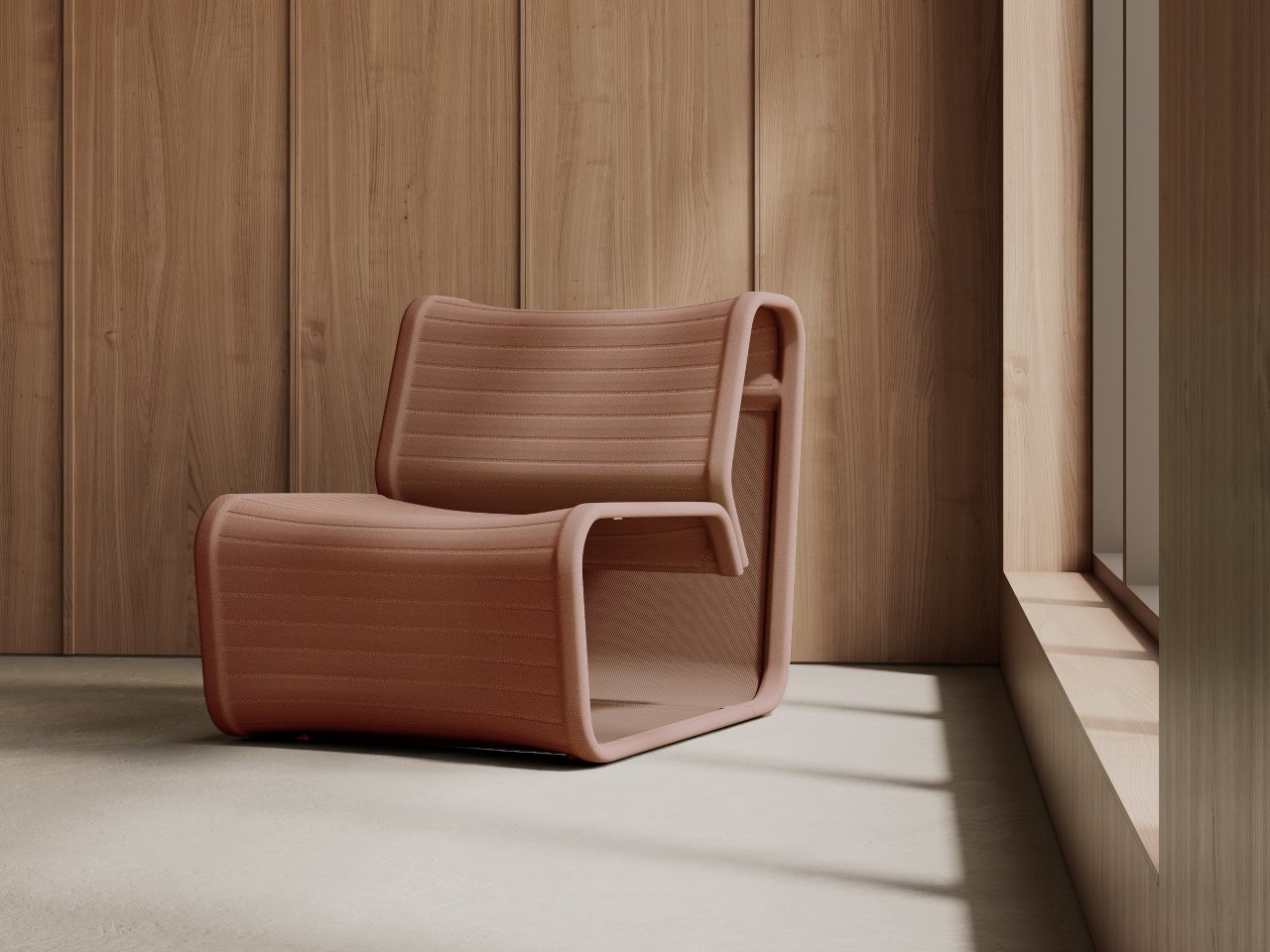Picture walking into a modern office and seeing what looks like a plush, upholstered lounge chair. You sit down expecting the familiar give of foam cushions, but instead discover something entirely different. The chair feels supportive yet airy, almost like sitting on structured fabric and air. That’s exactly what Paul Crofts achieved with his Knit One Chair for Isomi.
Most lounge seating follows the same basic formula: metal or wood frame, layers of foam padding, and fabric or leather stretched over the top. It’s been working for decades, so why change it? Well, Crofts looked at this traditional approach and decided to throw it out the window, replacing foam with air and conventional upholstery with 3D-knitted textiles.
Designer: Paul Crofts for Isomi
The magic happens through 3D knitting technology, which is commonly used in task chairs but rarely seen in modular lounge seating. This process creates the chair’s shell as a continuous, seamless piece that mimics the visual fullness of traditional upholstery while being made almost entirely of air and knit. The ribbed detailing references classic padded chairs, giving it a familiar yet futuristic appearance.
What makes this approach so compelling is the zero-waste output. Traditional upholstery involves cutting fabric pieces and discarding scraps, but 3D knitting produces exactly what’s needed without waste. The process also uses recycled materials and creates a fully recyclable end product. It’s the kind of circular design thinking that makes environmental sense without sacrificing aesthetics.
The Knit One system isn’t just a single chair, though. Crofts designed a complete modular collection that includes a lounge chair, a straight ottoman-style module, and an angled module. Each piece is fully reversible, meaning you can flip any element to function in both directions. This flexibility lets you create countless layout combinations for different spaces and needs.
There’s also a bolt-on solid wood side table that completes the collection, adding practical utility while maintaining the system’s clean aesthetic. The dual-tone knitted shell showcases elegant construction details, and the tactile ribbing feels substantial and inviting. You’d never guess that what you’re touching is mostly air structured by precisely engineered textile.
The environmental benefits extend beyond the knitting process itself. The chair sits on a lightweight metal frame designed specifically for flat-pack shipping and easy local assembly. This addresses one of the contract furniture industry’s biggest challenges: how to move large-scale seating without creating a massive carbon footprint from transportation.
By eliminating non-environmental materials altogether, the Knit One Chair pushes sustainability further than previous eco-friendly furniture projects. The textile feels opaque and textured, moving away from the open mesh look you might expect from knitted materials. Instead, it delivers the visual and tactile qualities people want from traditional upholstery.
That said, this radical approach might not appeal to everyone. The unique construction means comfort will feel different from foam-based seating, and the contemporary aesthetic might not suit all environments. The chair also represents a relatively new approach, so long-term durability in high-traffic settings remains to be proven over time.
Still, the Knit One Chair represents a significant step forward in sustainable furniture design. It proves that you don’t need to compromise on comfort, flexibility, or visual appeal to create environmentally responsible seating. For contract spaces looking to reduce their environmental impact while maintaining design quality, this modular system offers a compelling solution that feels both innovative and practical.
The post Modular Knit One Chair Reinvents Sustainable Seating With Hollow Design first appeared on Yanko Design.

